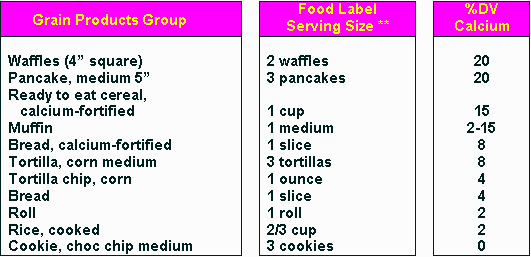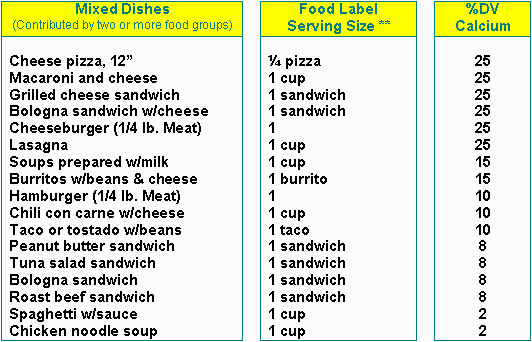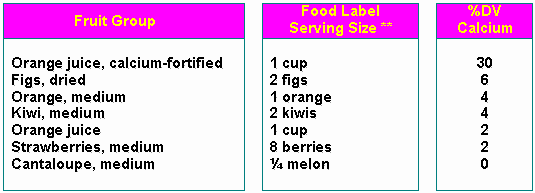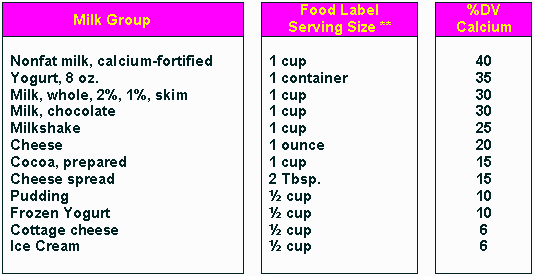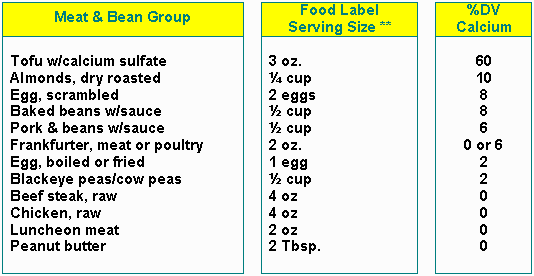A foundation for good bone health
Like many things growing girls do -- playing sports, finishing chores or finding time for homework -- healthful eating is a balancing act. It takes skillful maneuvering to get it right. Just as these girls plot their game strategy and budget their time, they need to choose among foods that make up a healthful diet and develop exercise habits that benefit them most -- not only for today, but for the future, too.
Adequate calcium intake at this time in life is critical to achieving full height with strong bones and teeth. The diets of growing girls often lack nutrient-rich foods such as fruits, dark-green or deep-yellow vegetables and milk or milk products. What growing girls eat affects their health now -- and in the future. For that reason, you not only need to show them the links between diet and health, but also to help them develop skills for making informed food decisions.
Physical activity is another essential component of a lifestyle that supports the growth of healthy bones and teeth. It appears that physical activity helps to build greater bone mass in childhood and early adolescence and helps to maintain peak bone mass in adulthood. Activities ranging from walking the dog to jumping rope can stimulate bone growth. The goal is to get girls moving with activities they enjoy and can pursue regularly.
Where is Calcium found in the body?
Bones and teeth make up ninety-nine percent of the body's calcium content.
When is the skeleton fromed?
Most of the body's bone mass starts to form before children enter puberty. During adolescence about 75-85% of the skeleton is formed. Therefore, young girls need to eat the right amount of the building blocks for bone; nutrients like calcium, protein, phosphorus and vitamin D.
What robs the body of Calcuim?
Some foods and behaviors can rob the body of calcium or increase its calcium need. Girls who smoke, drink alcohol, skip meals, drink too many cola-type beverage, eat too much salt or have certain eating disorders like anorexia and bulimia -- risk weakening their bones for life.
What happens to bone as women age?
It is important to strengthen your bones while you are young. Some women begin to lose bone even as early as age 35. Over time, this bone loss can lead to a condition called osteoporosis. Osteoporosis causes bones to become brittle and break with very little stress. Developing strong bones when you are young can help to reduce the risk of broken bones when you are old.
How much Calcuim and exercise do growing girls need?
To develop strong bones that support full growth, girls need to eat 120% of the Daily Value for calcium every day (1,200 mg) and they need regular physical activity born.
What does the %Daily Value (DV) tell you?
The FDA uses the term DV to describe the amount of calcium that the general U.S. population needs daily. To reach 100%DV for calcium, individuals should consume 1,000 mg. The %DV on the "Nutrition Facts" panel of a food label tells consumers how much calcium one serving of that food contributes to this 1,000 mg. So, if a food has 200 mg of calcium per serving, the "Nutrition Facts" panel on the food label would show that the food contains 20%DV for calcium. But girls (11-24 years of age) need to consume 1,200 mg of calcium every day. This means that their daily goal should be 120% of the calcium DV. By just adding up the %DV for calcium in all the foods they eat, girls can see whether they reach 120% each day. Also, it's easy to compare the calcium content of different products by looking at the %DV for each.
Serving size
The serving size found on the "Nutrition Facts" panel is based on what people typically eat -- it is not a recommended amount. You will find the serving size at the top of the panel. Remember that the calcium information is based on one serving. To figure out how much calcium you are getting from the foods in your diet, identify the serving size and the %DV on the label. For example, the serving size listed on a package of frozen mixed vegetables in sauce is 1/2 cup. If this amount provides 4% of the calcium DV and you eat 1 cup of these vegetables, then you will consume 8% of your daily calcium need.
Nutrient content claims
Many food packages include a claim about the nutrient content of the product, such as "High in Calcium." Finding these claims on the label is an easy way to identify foods that contain the calcium you need:
1. Foods containing 20% or more of the calcium DV, can say on the label that they are
"High in Calcium, "Rich in Calcium" or an "Excellent Source of Calcium."
2. A food containing 10% to 19% of the calcium DV, can say on the label that it "Contains Calcium,"
"Provides Calcium" or is a "Good Source of Calcium."
3. Foods containing 10% or more of the calcium DV, when compared to a standard serving size of a
similar food, can say that they are "Calcium Enriched", "Calcium-Fortified" or have "More Calcium."
For example, a box of calcium-forified corn flakes may include the following statement:
"Calcium Enriched (15% more of the Daily Value than nonfortified corn flakes)."
Calcium sources
Most everyone eats a variety of foods daily, and some foods are eaten more frequently than others. When identifying foods that can contribute to the calcium content of the diet, it's important to realize that foods which offer a small contribution in a single serving may provide an important source of calcium, if consumed frequently. (Nutrition textbooks can provide additional information about the calcium content of foods that girls may eat.)
